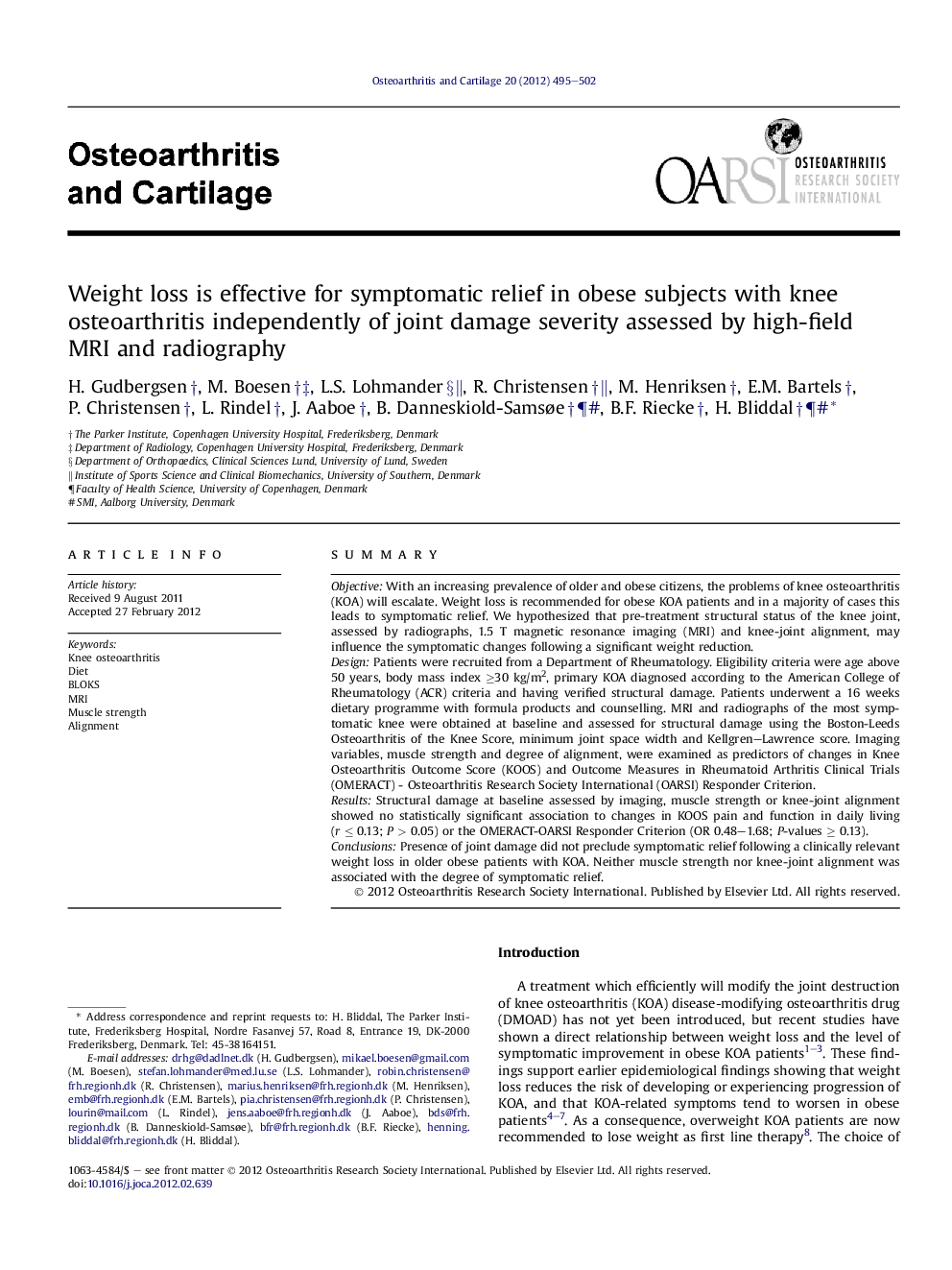| Article ID | Journal | Published Year | Pages | File Type |
|---|---|---|---|---|
| 3379957 | Osteoarthritis and Cartilage | 2012 | 8 Pages |
SummaryObjectiveWith an increasing prevalence of older and obese citizens, the problems of knee osteoarthritis (KOA) will escalate. Weight loss is recommended for obese KOA patients and in a majority of cases this leads to symptomatic relief. We hypothesized that pre-treatment structural status of the knee joint, assessed by radiographs, 1.5 T magnetic resonance imaging (MRI) and knee-joint alignment, may influence the symptomatic changes following a significant weight reduction.DesignPatients were recruited from a Department of Rheumatology. Eligibility criteria were age above 50 years, body mass index ≥30 kg/m2, primary KOA diagnosed according to the American College of Rheumatology (ACR) criteria and having verified structural damage. Patients underwent a 16 weeks dietary programme with formula products and counselling. MRI and radiographs of the most symptomatic knee were obtained at baseline and assessed for structural damage using the Boston-Leeds Osteoarthritis of the Knee Score, minimum joint space width and Kellgren–Lawrence score. Imaging variables, muscle strength and degree of alignment, were examined as predictors of changes in Knee Osteoarthritis Outcome Score (KOOS) and Outcome Measures in Rheumatoid Arthritis Clinical Trials (OMERACT) - Osteoarthritis Research Society International (OARSI) Responder Criterion.ResultsStructural damage at baseline assessed by imaging, muscle strength or knee-joint alignment showed no statistically significant association to changes in KOOS pain and function in daily living (r ≤ 0.13; P > 0.05) or the OMERACT-OARSI Responder Criterion (OR 0.48–1.68; P-values ≥ 0.13).ConclusionsPresence of joint damage did not preclude symptomatic relief following a clinically relevant weight loss in older obese patients with KOA. Neither muscle strength nor knee-joint alignment was associated with the degree of symptomatic relief.
